page 446
- Matt Taylor Notebook |
link to Inventing the New School Environment |
| The
strategy that emerged out of the August DesignShop,
and subsequent dialogs, is to use the existing Master’s
Academy campus as a R&D test-bed for the new
Campus and the various market offerings that will
emanate
from
the now forming ValueWeb made up of Master’s/MG
Taylor and many Canadian partners; and, that we will
create the knowledge
and capacity required to build the New Campus by doing this
work one project at a time. This is an action
research agenda
using a rapid prototyping
process to first make the NavCenter and then, use
the NavCenter, to incubate future projects and enterprises. |
| The
plan is to have the NavCenter built by mid 2004 so
that it can be ready for the Fall semester and for
the Design Development work of the New Campus. As
a step to this capability, a miniRDS will be installed
in the existing GYM and Cafeteria area as soon as
possible.
The Master’s
Design/Build/Use [link] ValueWeb will start work
in the mini Center to develop and build the permanent
NavCenter
and to start the preliminary planning phase of the
new Campus. |
| This
is a ‘bootstrap” process that will be funded, incrementally,
as it goes - the success of each phase building the
knowledge, energy and financial justification for
the next. |
| What
follows is a “first cut” Program Statement of this
NavCenter and “Classroom of the Future” test
bed. It summarizes past dialogs, proposes a design
concept as
a beginning concept, and outlines a ValueWeb work
process for the next year. |
|
Prior
MT hand drawn Notebook Pages |
|
|
453
12/07/03
Master’s
Implementation
Existing and New
Campus Program Integration
link:
full screen view
|
|
|
|
454
12/07/03
Master’s
AndMap
Fastrack Architecture
RDS Use
Two Strategies
link:
full screen view
|
|
|
|
455
12/07/03
Master’s
Implementation Strategy
Bootstrap Process
Emergence
link:
full screen view
|
|
|
|
466
01/06/04
Master’s
Schematic Concept
NavCenter
Plan and Section
link:
full screen view
|
|
|
|
467
01/06/04
Master’s
Schematic Concept Notes
NavCenter
Description
link:
full screen view
|
|
| The
pages, above, were produced in two work sessions,
about a month apart, following a two day December
planning session
in the
Rocky Mountains, with Tom and Paul. Pages 453 - 455
layout an outline development strategy for the entire
project. Pages 466 and 467, a concept of the existing
Campus NavCenter and the first classroom of the
future test
bed. This work will be developed further by the Program
Statement and schematic Concept Sketch that follows.
The intent is to build the NavCenter by mid year
which is an excelleration of the AndMap on page 454.
Other than that, however, the AndMap still reflects
current strategy and timing. The hand Sketch, shown
on Page 466, is most likely to change significantly
as work progresses; however, it is the concept that
is important. |
| The
aspects of this concept that are likely to hold during
future design iterations are: |
| The
new structure resting mainly on four
bearing points independent of the existing
structures. |
| The
new structure as a “space frame” cantilevering
from these four points and sheathed
in glass (transparent, translucent
and patterned) allowing light to penetrate
throughout all 3 floors and 8 levels
of the environment. |
| The
three kinds of spaces: indoor and out
door (including roof areas); the three
main levels of “traditional” floors
(spanning between the four bearing
points and extending onto existing
roofs at the higher levels); The “tree
house” spaces, which are spheres
in which levels and “floors” and
“walls” of unconventional configurations
are provided. |
| The
transparency (vertically and horizontally)
between spaces and the mediation of
light, sound, view, temperature, by
user controllable screens that function
in layers and by degrees. |
| The
placement of the new structure in the
void between the grammar and high school
buildings (original building and addition)
creating an accessible and interactive
space with inside, outside and rooftop
courtyards. |
| The
symbolism of the work: cybernetic
forest [link] (resolution
of dichotomies - technology and nature
- rationality
and emotion;
tree house (adventure, freedom, invention,
youth); transparency (open-space, innovation,
freedom); a Cathedral of the human
soul - of learning; a green PLACE in
all seasons - warm in the winter, cool
in the summer - earth, fire and water
- and fresh air - a human-healthy environment. |
| The
basic layout of the functional areas
allowing them to work, themselves,
independently, or together; and likewise,
independently
or in conjunction with the other (existing)
school areas. |
|
|
| To
fulfill its mission, this environment has to be NATURAL,
organic [link],
life-like - authentic [link];
it has to be alive. This means that the way (dogu
[link])
the environment is created is as important as the
design (in the
abstract, visual sense). The life has to be built-in.
This is done only by the intention and attention that
is brought to the work. Architecture is the expression
of those who build and use it - it cannot be faked
[link].
It is made. It is the measure of
our ability to conceive of our highest sense of ourselves
and
the purpose of place - and make that happen in
reality. Every act taken in the
making of a building becomes what that building is.
Every action taken within it accumulates
the ledger of its humanness. Soul-places
are the result of soulful work - and living.
The
Program, therefore, is not only about the physical
thing
- it is a much about how this reality is
to be created. |
|
Program
Statement - Function |
| If
there be any building that a society builds that
should reflect it’s very best it is the environment
in which
children are educated. |
| In
the case of this building, this is not only a place
children will learn - it is a major aspect of the
what they will learn.
It is also a place where a future environment for
learning will be conceived and planned. It has to
be understood
that these children will learn exactly what
we create and what we do. This is a far greater influence
than what we say. |
| The
environment that they come to learn within will be
our values writ-large and our statement of what is
the
possible. |
| This
sense of the possible is the greatest gift
we can give them along with the tools
to achieve it in their own way. Education should
focus on the nurturing of fit human beings - this
includes competencies of all kinds. If a child were
to grow up a bum, or a terrorist or a mad scientist,
producing industrial products that pollute the Earth,
it is small consolation that s/he is excellent at
math. |
| This
is why the mission [link] of
Master’s Academy is what it is. It is also no accident
that the academic
results as what they are [link]. |
| The
questions at hand are what makes up the ideal school
of the future and how do you go about building it?
In addition, how do you create the financial and
community base necessary to integrate this school
into civic
life? How do you create an “away” environment
of learning for children at the same time provide
them
with real-world
experience akin to what they will know as an adult
in a now unknowable future - a future with almost
unimaginable risks and new opportunities? These questions
get to the very nub of the NavCenter Program. The
NavCenter has to facilitate the: |
masters_nav_center_function |
The
Existing School by
...providing
a collaborative environment for
students, teachers and administrators
for the ongoing development of the
school and its environment and processes;
as well as, be an enviornment for
the learning of creative, collaborative
processes. |
The New
School Design and Development by
...providing
a dedicated, collaborative design
and project management
space
for the
duration of the project. |
The
Classroom of the Future and Enterprise
by...
...providing
a test-bed, rapid prototyping space
where real classes can be conducted
(and evaluated) by employing new
architecture, learning processes
and technology combinations
- as an
integrated system; and, providing
the appropriate start-up facilities
for the commercial ValueWeb that
will
market resulting products and services.
|
Community
Development
...providing
capacity for community DesignShops
and learning experiences.
|
Local
Business DesignShops by...
...providing
capacity for business DesignShops
and learning experiences at a scale
capable of developing the market
for a NavCenter
business. |
Existing
Property Exit Strategy
by
...providing
ValueWeb development and incubation
space for exploring post new Campus
options:
a)
sale of existing property to
another school or institution;
b) develop the facility to
support collaborate work, incubation
and conferencing as a stand-alone
business;
c) continue the operating the
space as a Master’s Academy
site after the new Campus is
developed.
|
These
and other options will be explored
in a collaborative way with prospective
partners and/or buyers. The architectural
development of the existing site
has to be
conducted in such a way as to augment
these options not limit them. |
|
|
| This
is a multifaceted and complex program that centers
around the following capacities: learning, facilitation,
creativity, incubation, project management and enterprise
creation. The users are diverse: students, teachers,
school administrators, the new campus design-build
team, community and corporate clients, new ValueWeb
members for the creation of new enterprises. |
| This
is an environment for learning and building the creative
life [link]. |
| As
a cybernetic forest, the NavCenter will
be augmented with computing and communication technology;
its fact-ness
is that it will function as an engine of
creation. It will function as a basin-of- attraction
- a stake in the ground - clearly expressing values
and ideas around which a ValueWeb can form, organically,
much like a reef ecology grows itself [link]. |
|
Schematic
Design - Layout
|
Master’s
NavCenter - 1st Floor
January 13, 2004 - Matt Taylor
|
| The
NavCenter, at the first floor level, connects to
the existing structures in four places. This facilitates
the appropriate degrees of interaction while turning
the areas between the existing building into a
garden courtyard. Circulation, on the first floor
level is primarily for Master’s students, teachers
and administrators. Area #1 is Library, Reception
and the NavCenter KWIB function. Area #2 is the
main Hallway (widened by the removal of the GYM
Storage Room). Area(s) #3 is composed of are stairwell(s)
and elevator(s) - one at the main Entry by the
east parking lot and one in the landscaped courtyard
(#8). Areas #4 & #5 are multipurpose rooms, set
in a garden, that can be used individually or as
one large space. These will be suitable for team
rooms,
special
student or teacher projects, and so on. The space
can also be used as a client Discovery Session area
or Sponsor
Team work area in the circumstance
that the main NavCenter facilities on floors two
and three are being used. |
| Room
#7 is a storage area that will house and RDS capability
that can be deployed into the high school GYM.
This can be built first so that DesignShop capability
can be provided for enterprise development, teacher-student
interactions and to support the process of designing
and building the NavCenter. This area can be set
up so that full deployment is a matter of minutes.
Once the NavCenter is built this capability can
be kept for overflow use and to support very large
DesignShop and PatchWorks exercises - it also will
store materials for configurings areas #4, #5 and
#10. |
| The
classroom that is now in area #10 will be moved
to the where the Teacher Lounge now is. The Teacher
Lounge will be moved to the third floor area in
the south east portion of Tree Three (see: “e”).
Room #10 to become an open multi-use interactive
area
with kiosks, serious games, reading materials,
toys, puzzles, etc. This is an area where student,
teacher, staff, client, parent, community leader
can interact comfortably - it is a village
commons. |
| “a”
indicates the foot print of the base for the four
“Trees” that make up the structure of the NavCenter
columns and roof. “b,” the outer line of the second
floor. This rectangle will contain the classroom
of the future, breakout and project room areas.
It also has direct access to the Team Tree
House sphere.
These areas will be separated by sliding partitions
and and light wells that allow light down into
the first floor area. [see
second floor plan, below] “c”
is Tree number one; “d,” Tree two; “e,” Tree three,
and “f” Tree four. The “trunks” of these Trees
house HVAC, wiring and light-tubes. #9 indicates
landscape areas that are outside but sheltered
by the second floor. The different combinations
of sun orientation, size of area, degrees of shelter
- and, the various mechanical augmentation that
can be brought to bear - that make up the landscape
areas will create a high
variety of mico-climes creating a unique opportunity
for year around gardening in a harsh climate. Besides
the beauty of this and the amenity it brings to
the setting of the NavCenter, this presents a learning
opportunity. It also is a nature/human-made
partnership likely to be more prevalent in the
future. Everything
is as it is for multiple reasons. |
| The
interior and exterior landscaping is an integral
aspect of how the NavCenter fits both the site
and the existing buildings. In actuality, the
TREE metaphor cannot be carried too far
- it is a direct reference. The landscape
is a prairie that runs to the Mountains nearby.
This part of it is covered with industrial-age
peanut-butter-spread low quality buildings. The
landscape is obliterated. This is made more dismal
in the winter - snow, slush, concrete and asphalt
in an unhappy “arranged” marriage. This combines
to make a hard landscape of unforgiving buildings.
Most architects, when designing for children, try
to compensate for this by adding lots of bright
colors - a superficial and condescending “solution.”
No; instead, we will build a tree house, a place
of variety and mystery - a place of natural colors
in great variety; of prospect and refuge - of light-washed
changing, dancing delight. |
| As
Tom put it: “the building emerges out
of its industrial base as symbol of the future.” |
|
Additional hand
drawn Notebook Pages
|
|
|
470
01/17/04
Master’s
NavCenter
Transparent Architecture
Schindler, Wright, Goff
Form As Content
link:
full screen view
|
|
|
|
471
01/17/04
Master’s
NavCenter
Subtitle Changes
Human Place
Color and Garden
link:
full screen view
|
|
|
|
472
01/19/04
Master’s
NavCenter
Cybernetic Forest
Simulation/PatchWorks
Processes
link:
full screen view
|
|
| Between
February 2 and 10, a computer model of the NavCenter
was built by Matt Fulvio and Scott Arenz. This model
incorporates Jim Taipale’s idea of covering
the courtyards as we discussed on January 22nd during
our Nashville
session. As the model was built, certain design
refinements were made and thought given to various
manufacturing
and construction options. The purpose of this iteration
of the model is to display the basic concept in three
dimensions both, in terms of its general massing
and interior
spaces, and to show how it fits within the existing
buildings. It also serves as a basic proof of concept
exercise. These matters are to be further discussed
further during
the initial
D/B/U
ValueWeb
Team meeting
in
Calgary February 11 through 13. |
|
| This
view is from the second floor roof deck looking toward
Tree #3. The stairway/elevator mass pierces the suspended
glass roof that coverers the first floor Court Yard.
The pyramid lids over the Multipurpose Rooms (#4
& #5), set in the garden, are show in their open
position. The Tree House inside of Tree #3 is a Group
Work
area configured for technology augmented [link] dialog
and knowledge work in a causal setting. This is a
place of serious work in a setting rarely found
in the workplace: one of relaxation, playfulness
and luxury - a luxury based on setting, landscape,
friendly materials, spatial prospect and refuge and
ever changing light not on formality and materials
you
are afraid to touch. |
|
| Inside
the second floor area - Tree #3 is on the left and
#4 to the right piercing the third floor. The mountains
will be visible from this viewpoint. This incorporates
an aspect of the Wilderness Mega City [link] design
in that the building lifts the individual up to see
nature
in a new way and with renewed respect. The Trees
and their “trunks” define the various functional
areas of each floor creating a difference that can
be controlled by degrees while avoiding a total separation. |
|
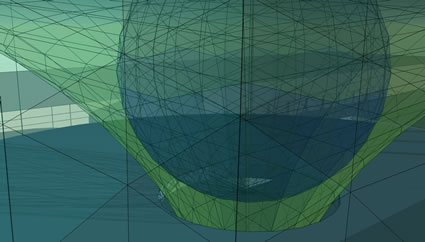 |
| View
from the Meditation Tree House down to Tree #3. The
Tree Houses will be developed as “rooms within
rooms” (almost buildings within buildings)
and will have a layered interface with their surrounding
areas.
They are,
in effect,
EcoSpheres
[link] within
a larger structure that makes up their landscape.
These “rooms” will be fitted out in
different ways according to their purpose. They
are informal areas
where walls, floors and furniture all morf into
differentiated yet integrated interacting sub-areas.
A building that represents and facilitates human
transformation must offer many different viewpoints
of reality. The way that the physical organism
moves and looks in three dimensional space has
direct physiological, psychological and spiritual
consequence. This is more than mere metaphor.
It is fact-based and physical; it has both neurological
and genetic connection. The typical places of work
and learning are environments like our packaged
food: matter without nutrition; the deprive the
soul and lack life. |
|
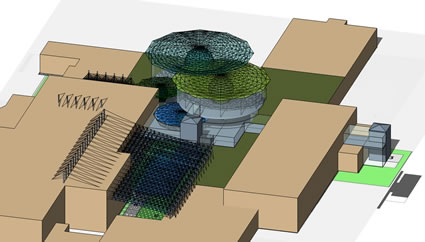 |
| A
birds
eye view of the entire complex. Here the concept
becomes clear. The existing courtyard and rooftops
become gardens some enclosed some open to the weather.
A total of eight levels compose what is a three
story building with greater than average ceiling
heights. This is both a vertical and horizontal
space - the “flat world” viewpoint
of the typical building is gone - all areas are
related yet
providing
a minimum
of 12
separate functional areas. Circulation can be configured
so that the NavCenter is open to the school (the
default mode) or separated from it in the case
of an outside DesignShops (on occasion). The NavCenter
engages the existing school and at the same time
rise upward to embrace the mountains and the future. |
|
Architecture
That Transforms
|
| It
was traveling between taliesin West back to Wisconsin,
in 1958, that I discovered the power of architecture
to transform. An afternoon meeting with Mrs. Pew
as she explained how her environment had changed
her
life became a seminal moment in my life [link].
That moment ruined me forever - I cannot accept buildings
that fail to offer a new and transforming view of
life and that do not support the attainment of the
highest expression of the human; indeed, that do
not demand it. |
| This
building is intended to both challenge everyone to
follow their quest [link] and
support their journey in reaching it. It is intended
to shake up the conventional viewpoint about life
and human potential. It is intended to raise the
bar for our team as we design and build the new Master’s
Campus. It is intended to cause us to radically transform
our own way of working as we solve the problems associated
with building a structure such as this - and doing
it in a way that is affordable. It is intended that
in order to accomplish this vision we will
have
to build
a Valueweb of many talents and of great capacity
so that we will be ready for the greater challenge
ahead.
This is a work for Cathedral Builders [link]. |
|
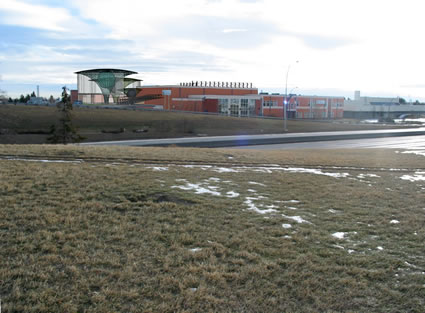 |
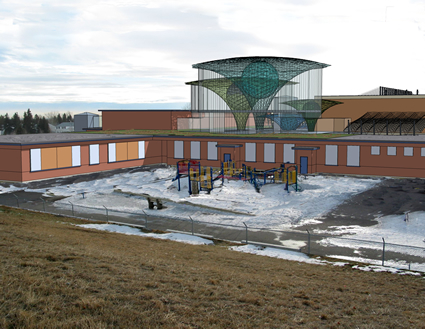 |
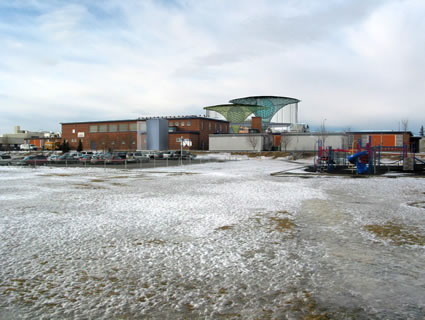 |
|
|
| Go
To Computer Model and Notes |
|
|
|
|
|
| Return
To the New School Environment |
|
|
|
|
|
| Return
To Master’s miniNavCenter Program Statement |
|
|
|
|
|
| Return
To the FutureSchool Project |
|
|
|
|
Matt
Taylor
Elsewhere
January 4, 2004
|
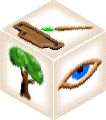
SolutionBox
voice of this document:
VISION • PHILOSOPHY • PROGRAM
|
posted
January 4, 2004
revised
February 10, 2004
• 20040104.239321.mt • 20040108.452877.mt •
• 20040109.398760.mt • 20040110.123400.mt •
• 20040113.235411.mt • 20040114.376687.mt •
• 20040210.377620.mt • 20040213.572410.mt •
(note:
this document is about 60% finished)
|
|
|